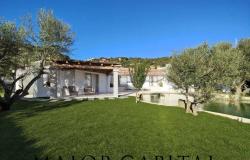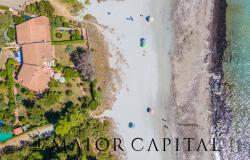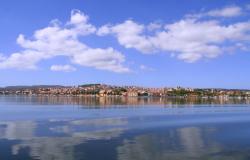 A remarkable exhibition in Sardinia gives visitors the chance to encounter the civilizations that dominated South America before it was colonized by Europeans.
A remarkable exhibition in Sardinia gives visitors the chance to encounter the civilizations that dominated South America before it was colonized by Europeans.
The show is on at the Museo del Territorio, near the south-western town of Villanovaforru.
It features some 300 objects produced by the continent's ancient indigenous peoples between 7,000 BC and the 16th century AD.
"This exhibition enables us to discover the America that we have never seen before," organisers said
"These ancient peoples were architects, healers, warriors, priests, slaves and emperors. They were wise and poetic, yet bloodthirsty too.
"The created civilizations, worshipped their gods, fought battles and built empires. The show reveals how they were different to us and how they were similar.
The show is unique as the pieces have never been brought together before and most have never been outside their homelands.
They range from statues and sculptures to pottery, religious items, jewellery, masks, embroidery, weapons and a variety of everyday objects.
Visitors are greeted by one of the famous Moai heads of Easter Island in the South Pacific.
These are thought to have been made by the Polynesian ancestors of the Rapanui inhabitants of the island - which today belongs to Chile - from the 12th century AD.
Experts believe these huge, stern faces may have been regarded as the embodiment of powerful dead chiefs.
The show also features mummies and funeral objects of the ancient Chinchorro people, who lived in an area between the north of present-day Chile and the south of Peru.
The first of these mummies are estimated to date to at least 5000 AD, some 2,000 years before the first Egyptian mummies.
Unlike the Egyptians, the Chinchorro mummified all their dead, including children and still-born babies, not just the upper echelons of society.
There are also works representing the art and culture of the Selk'nam - or Ona - people of the Tierra del Fuego islands, the Aymara tribes of the Andes and the Mapuche people of central and southern Chile.
A traditional wooden Mapuche 'ruka' home has been recreated, alongside weapons and tools used by Mapuche hunters.
At the show's inauguration, experts pointed out how similar these rukas are to the traditional 'capanna' dwellings of the Sardinians.
There are also multimedia exhibits which enable visitors to see the different natural settings these people lived in and listen to indigenous South American music.
The exhibition, entitled 'Arte e cultura precolombiana: 10.000 anni di civilita' in America Latina (Pre-Columbus art and culture: 10,000 years of civilization in Latina America), runs until October 27.







